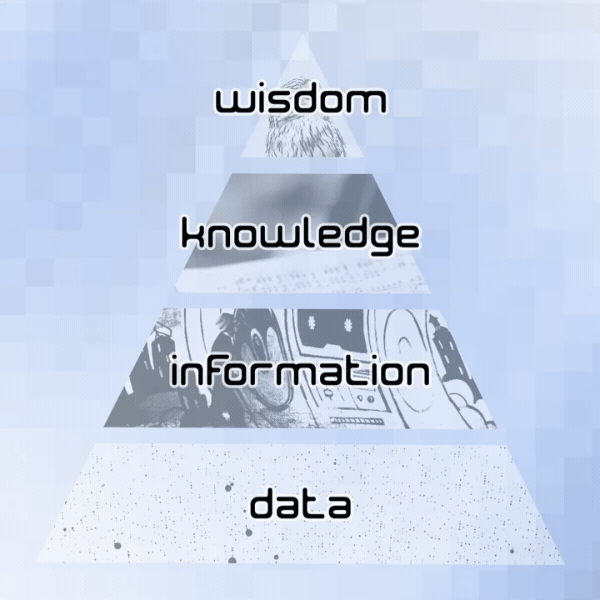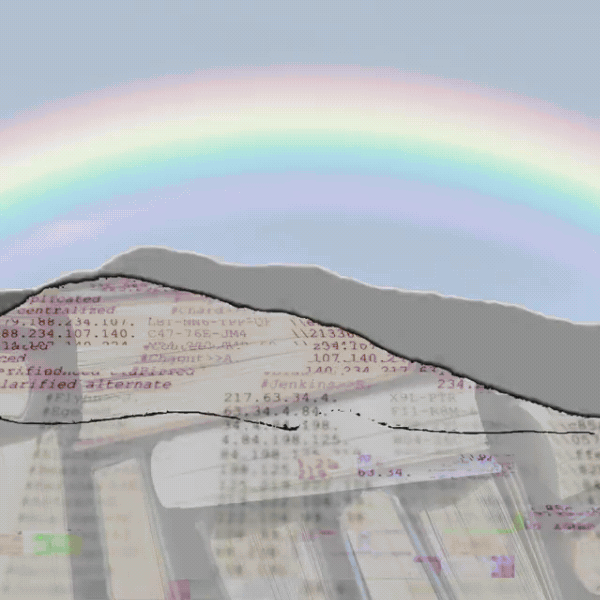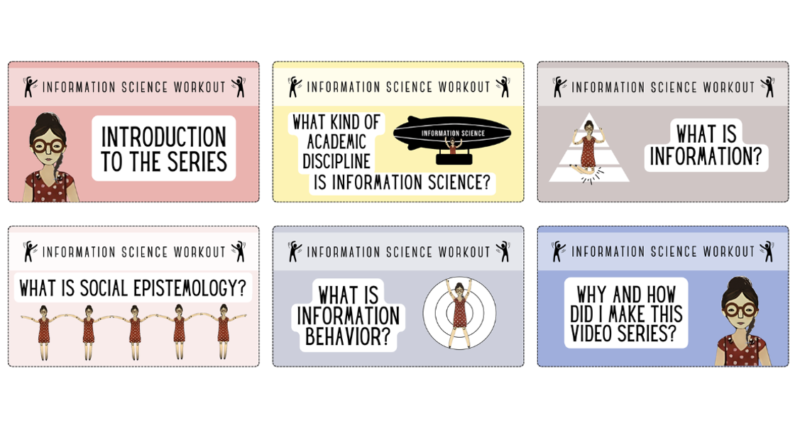Information Science Workout: Use Your Body to Learn Information Science!
Information Science Workout
Use Your Body to Learn Information Science!
Jenna Hartel
A new video series at INFIDEOS, Information Science Workout, invites people to learn major concepts of Information Science through their bodies. This approach resonates with embodied cognition and multimodal pedagogy, two movements that recognize the important role the body plays in making sense of the world. As the Introduction to the Series declares, “Your body can be your teacher.”
Each short episode begins with a fundamental question, such as “What is information?” or “What is information behavior?” An answer follows in the form of spoken explanations drawn from the Information Science literature, and instructions to enact simple postures and movements. Across the whole video series, learners of Information Science are invited to sit, stand, wiggle their toes, bend their knees, touch the heart, and reach towards the cosmos. (All the activities are gentle and designed with accessibility in mind. The lessons also function perfectly well without the movements.) When potentially unknown terms are introduced, such as “social epistemology,” viewers are prompted to speak the word aloud. These action-oriented engagements establish new, corporeal expressions of Information Science. The videos would have the greatest impact performed altogether in class, but of course can be done anywhere.

For years I have experimented with multimodal pedagogy at the Faculty of Information. I can attest that while there is initially hesitation from students to participate, many later declare an appreciation for diverse ways of learning, being, and doing. My students also report that after embodied interventions, the energy level of the classroom is changed for the better, and the ideas stay in their minds.
The sixth and final episode, Why and How Did I Make This Video Series?, brings full transparancy to my video-making process, in particular the use of artificial intelligence. For example, each video is narrated by a lively puppet in a red polka-dot dress (she is riding in the Information Science dirigible, below). This avatar was generated through Animated Drawings, an online tool that brings children’s drawings to life. In the concluding episode, I attempt to provide road maps for other video-creators.

I encourage all educators of Information Science to take a leap and try Information Science Workout. Here’s a link to the 6-episode playlist.
Cite this article in APA as: Hartel, J. Information science workout: Use your body to learn information science! (2024, July 9). Information Matters, Vol. 4, Issue 7. https://informationmatters.org/2024/07/information-science-workout-use-your-body-to-learn-information-science/
Author
-

I am an Associate Professor at the Faculty of Information, University of Toronto. As an interdisciplinary social scientist devoted to the field of Library and Information Science (LIS), I conduct research in three related areas: 1) information and the "higher things in life" that are pleasurable and profound; 2) visual and creative research methods; and 3) the history and theory of LIS. In the Master of Information program at the Faculty of Information, I mostly teach graduate students in the Library and Information Science concentration. Both my research and teaching aim to be an imaginative forms of intervention in the field of LIS, through unorthodox projects such as Metatheoretical Snowman, Welcome to Library and Information Science, and the iSquare Research Program. See my website at jennahartel.info or my YouTube Channel, INFideos.
View all posts





